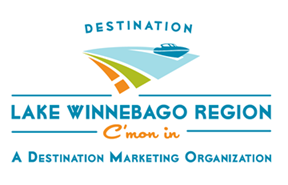Find a Way to Give Back
10/04/2019
By Amy Wunderlin
Today’s companies are more focused on social responsibility and service to their communities than ever before. Incorporating service projects into annual meetings and events is a perfect way for organizations to meet both goals, while providing a fun networking experience for attendees.
“Meeting group service projects are really mutually beneficial experiences, and they add deeper meaning and purpose to the meeting being held,” says Lindsey McKee, communications manager at VISIT Milwaukee. “They also contribute to— and even build—a bond with the community in which the organization is hosting its event.”
Why Include a Service Project?
The Wisconsin chapter of Meeting Professionals International (MPI) has a long history of being involved in different charitable causes and service projects.
“As long as I can remember, we’ve supported different charities at our events and education meetings,” says Kathy Reading, the director of publications and community outreach for MPI Wisconsin.
Sometimes it’s something as simple as a food drive in which members are asked to bring different supplies or goods to an event. This year, however, the organization set a goal to enter into a year- long partnership with a local charitable cause and support that cause at chapter events throughout the year.
The membership chose the Wisconsin Humane Society. During its spring educational meeting, MPI Wisconsin made fleece tie blankets for the organization.
“We knew it was something the Humane Society needed. It’s also one of the many suggested projects on the organization’s website,” explains Reading. “They go through these blankets quickly—it’s kind of a never-ending need. If they’re not donated, they have to use their much-needed funds to purchase them.”
Attendees at the spring meeting helped make 60 fleece tie blankets for the Humane Society to use in its kennels. Once pets are adopted, the blankets go home with them.
The Humane Society helped with the details, such as sizing and measurements, so MPI Wisconsin could maximize the fabric and supplies.
According to Reading, in addition to supporting a charitable cause, service projects provide a great team-building activity for meeting attendees.
“You get everyone at the table interacting and getting to know each other in a way that’s maybe a little more comfortable than handing out a business card,” she says, adding that it’s also “nice to have something that’s a little more hands-on to break up the day and keep the juices flowing.”
How to Choose a Project
Reading says it is important to put thought into choosing a charity that resonates with your audience.
“Make sure it’s something that will connect with your audience. Work closely with your charity partner to find a project that is engaging and offers networking opportunities, while also providing a valuable service,” she explains.
A good service project should align with your company’s mission, McKee adds.
For example, a book donation or volunteer reading experience at a teachers’ convention would be a perfect fit.
“It’s good to have something that relates back to your mission. … Something that not only demonstrates your service to the community, but also shows what your company is all about,” she says.
McKee suggests choosing something that is important to your host city if you can’t find a project that matches your company’s mission.
“It’s always a good idea to connect with your local convention and visitors bureau (CVB),” she adds. “CVBs like VISIT Milwaukee have the pulse not only on the best destination attractions and venues, but they also are aware of the local community’s most pressing needs and services.”
In 2015, VISIT Milwaukee helped coordinate a park cleanup for the National Association of Sports Commissions during its annual meeting. More than 100 association members participated in the cleanup of Washington Park, the original home of the Milwaukee County Zoo. They completed tasks like mulching and raking, and even assembled benches throughout the park.
McKee also recommends collaborating with local volunteer associations that can direct groups to service projects in the area. She specifically points to the United Way of Greater Milwaukee, which is very aware of volunteer needs and efforts in the local community.
In addition, McKee suggests looking at local news stories to unearth potential service projects that meet the needs of the local community.
Preventing Project Pitfalls
Planning an event or meeting is a challenge. Now add a service project on top and it’s easy to see why these projects sometimes fail. Whether that’s due to a lack of participation, not enough time or an overly complex project, Reading and McKee offer the following advice to prevent those pitfalls.
“We put a lot of thought into coming up with projects that work well for introverts and extroverts alike and people of different needs,” Reading says.
MPI Wisconsin’s recent tie blanket project worked well, she notes, because it was simple and offered a lot of adaptability to suit many different personality types.
The simplicity also helped with time management. MPI Wisconsin allotted up to 45 minutes for the project, but because other events were running long, participants ended up completing the project in 30 minutes, which Reading says was not an issue.
She adds that some people finished their blankets at another time throughout the day and that worked well, too.
“I’ve attended other events where the projects were too complicated or too time-consuming. Then I think people find it easy to opt out. Keeping it simple, fun and easy to accomplish in a short period of time is key,” Reading concludes.
McKee advises planners to do their research and ask the right questions. It’s also important to have a backup plan, especially if the project is weather-dependent. For example, if your project is a walk or run, and you are unable to participate due to weather, you want to make sure there is another option available. This might be a cash donation to the chosen charity or gathering into a shared space to learn more about it.
Designating a lead coordinator on your planning staff is also helpful, as well as procuring additional volunteers outside your staff to help manage time wisely.
“This is where your CVB can come in handy,” McKee says, noting that VISIT Milwaukee has a group of over 200 volunteers available to help groups with staffing.
To combat participation challenges, McKee says you should promote the project on your website and conference materials. Having volunteers on site to register people when they get to the conference and offering incentives, such as a lunch or a giveaway item, can also boost interest.
“Of course, it is going to be a lot of work, but you need to work your public relations efforts to make sure that the project is not only rewarding for your attendees, but also demonstrates social responsibility. You want to show the community you are not just here to meet in their town, but to participate in their community, that you are happy to be here and to help where you can,” she adds.











